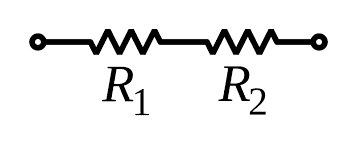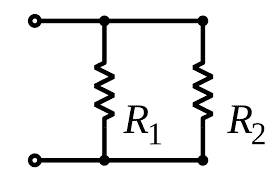The resistor is one of the fundamental elements in engineering. As compared to other fundamental elements inductor and capacitor, the resistor is used in almost all electronic and electrical circuits. It is also known as a linear, bilateral, and passive element. The resistor is available in a different range of values, starting from milliohms to megaohms. It also dissipates a lot of heat when it carries current. Resistor value depends on the resistivity of the element, length, and cross-sectional area of the conductor. It is also available as fixed and variable resistance.
What is a Resistor?
The resistor is an element that offers resistance to the flow of charges or in simple words, it opposes the flow of current. It is one of the fundamental elements. It is placed in a circuit to control the flow of current. As per Ohm’ Law, the current is directly proportional to voltage. And resistance can be considered as proportionality constant. The symbolic representation of the resistor is shown below

Resistor
What is Resistance?
Resistance is the property of the resistor. The resistance of the resistor depends on the material. An important factor that plays a role to determine the resistance of the resistor is specific resistance, length of the conductor, and cross-sectional area of the conductor. Variation of any of these quantities varies the value of resistance. Resistance is measured in Ohms. The unit of resistance is ohms. The symbolic representation is Ω.
The resistance and current passing through it are inversely proportional to each other. For constant voltage, an increase in resistance decreases the current flowing, and a decrease in resistance increases the current. This property is used for variation in current in the circuit.
Properties of Resistor
The resistor has the following properties
- It is bilateral in nature. This means that a resistor can carry current in both directions. The same property also holds true for the inductor and capacitor. But semiconductor-based devices such as diodes, transistors, etc. are unilateral in nature. They can carry current only in one direction.
- It is linear in nature. An element is said to be linear if there exists a linear relationship between voltage and current across the element. This means that with an increase in voltage-current also increases linearly. Inductors and capacitors are also linear elements. Semiconductor based devices like a diode, transistor SCR all are nonlinear devices.
- It is passive in nature. Resistor can’t store energy. Neither can be a source on its own. Resistor always dissipates energy in the form of heat. Other elements like inductor and capacitor store energy in the magnetic and electric fields respectively. Examples for active devices are operation amplifier (OPAMP) etc.
Construction of a Resistor
A resistor consists of two terminals. And in between the terminals, we have elements that act as a resistor. As shown above, the yellow part forms the material through which the resistor is made. Based on the value of the material, its resistance is evaluated. For very high resistors we use long wire which forms the resistance. Just like in variable resistor where a long wire is wound on a ceramic core.
The Resistor in series and Parallel
To obtain different values of resistance, the number of resistors are connected in series or parallel.
Series Connections

Series Connection
As shown in the above figure, two resistors R1 and R2 are connected in series. In such a case, the equivalent resistance is given by
Req = R1 + R2
In a series connection, the overall resistance increases. The connection is widely used whenever we require to increase the resistance of the circuit. In other words, two resistors are said to be connected in series if the same current passes through them. As shown in the above figure, the same current passes through R1 and R2. Even if we add one more resistance R3, the same current would flow. But in series connection, the voltage gets divided.
The voltage across R1 is not the same as the voltage across R2. The more the resistance value, the more would be the voltage drop across the resistor. An increase in resistance by adding external resistance is one method to control voltage. For example in speed control of DC motor, armature voltage is varied by adding external resistance. Change in voltage varies the speed. The same principle holds true for a rheostat also. In a three-point starter, four-point starter, etc. also the same concept is used. Resistances are added in series in steps, such that resistance increases in steps and hence starting current is reduced.
Parallel Connection
The circuit below shows the parallel connection of resistors. In parallel, the equivalent resistance is given by
Req = (R1*R2)/(R1+R2)

Parallel Connection
In other words, two resistors are said to be in parallel, if the voltage across them is the same. The voltage across R1 and R2 is the same, but the current gets divided among R1 and R2. In a parallel connection, the overall resistance decreases. As resistance decreases, current increases. So, this connection is used, where we need to increase the current, and maintain voltage constant. The current gets divided based on the current division rule.
Sometimes a combination of series-parallel resistances is also used. The best example is the star-delta starter. Where initially the connection is instar and later converted to the delta.
Please refer to this link to know more Transistor MCQs & Resistors MCQs
Resistance Value Calculation
The value of resistance can be calculated by generally two methods. One is to calculate the resistance based on specific resistance, length of material, and cross-sectional area of the conductor. It can be expressed as
R = (ρL)/A
Where ρ is the specific resistance, L is the effective length of the conductor, and A is the cross-sectional area of the conductor. It can be seen that the resistance of the conductor is directly proportional to specific resistance, effective length. Whereas it is inversely proportional to the cross-sectional area of the conductor. Specific resistance is constant for every element.
The other method of calculating resistance is by using the color code method. As shown in the figure below, each resistor is assigned with a set of colors on its body.

Color Code
To calculate the value of resistance we have to follow the table of color code as shown in the figure. Each color is assigned some value, and based on the sequence of colors the resistance value is calculated. As can be seen from the figure, if the first color is black then it is assigned as 1000 ohms. Similarly, it is followed for other colors.
One fundamental difference between the two methods is in the first method, resistance is calculated before manufacturing, and for the second method, resistance is calculated after manufacturing.
Applications of the Resistor
The resistor is one of the fundamental elements in the field of electrical and electronics engineering. It is almost used in every circuit which deals with current and voltage. Some of the frequently used applications are
- Used for the manufacturing of electrical machines. It acts as a winding that is placed in the stator and rotor parts.
- Used for overhead transmission lines. Where resistance is one of the fundamental parameters,
- Used in electronics circuits, such as amplifiers, adapters, etc.
- Used as a rheostat for the addition of external resistance.
- Other common applications such as a potentiometer, loudspeakers, remote-controlled appliances, etc.
FAQs
1). What is the function of the resistor?
The function of the resistor is to oppose the flow of charges, i.e. current.
2). What is an example of a resistor?
Anything that opposes the current, can be treated as a resistor. Like copper wire which has bad resistance, but good conductance. Rubber has bad conductance, good resistance.
3). What are the types of resistors?
Different types of resistors are wire wound resistor, metal film resistor, light-dependent resistor, etc.
4). What is a series circuit?
Two resistors are said to be connected in series if the same current passes through them.
5). What do you mean by LDR?
LDR means a light-dependent resistor. Its resistance value can be varied based on the intensity of light.
We have seen the concept of a resistor, its working principle, and methods of connecting the resistor. It is one of the fundamental elements and used almost in all electrical and electronic circuits. At this point, one may think what is the role of the resistor in other fields of science like chemical engineering, biology, etc. Does resistance have a role to play in that aspect that needs to be analyzed?